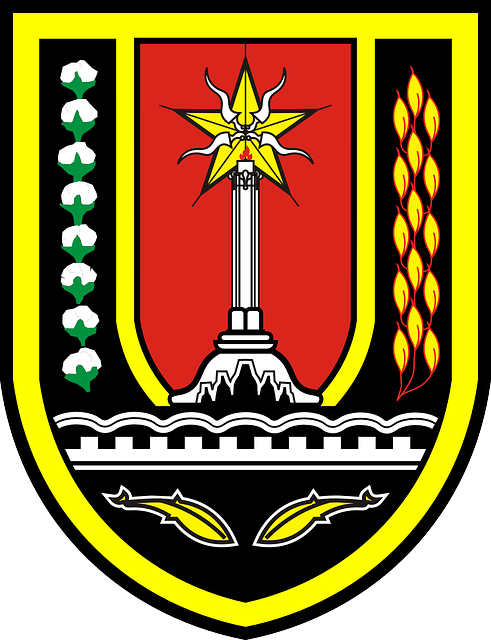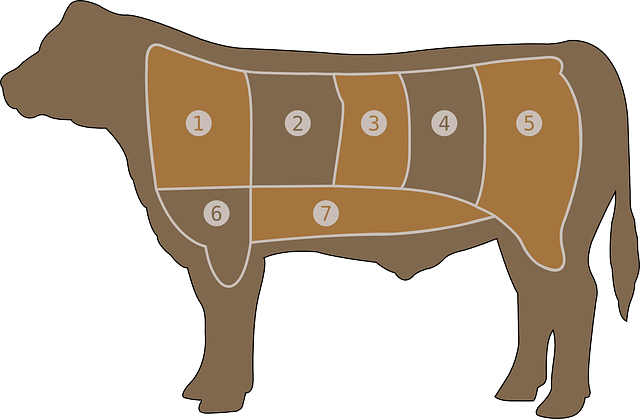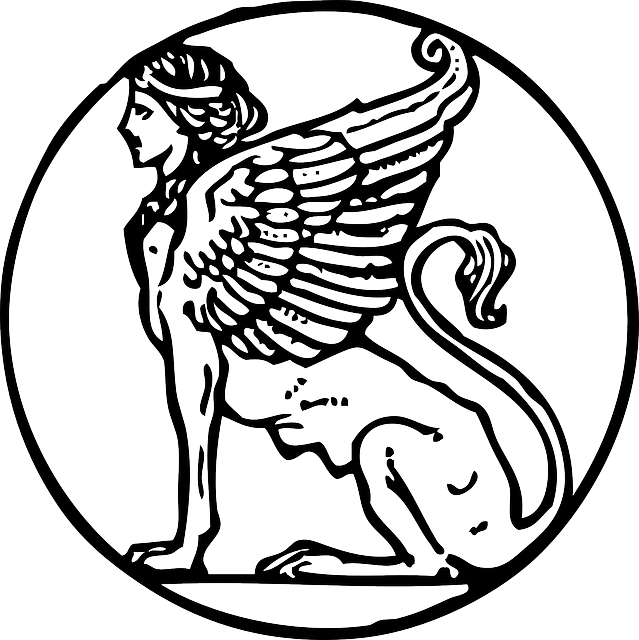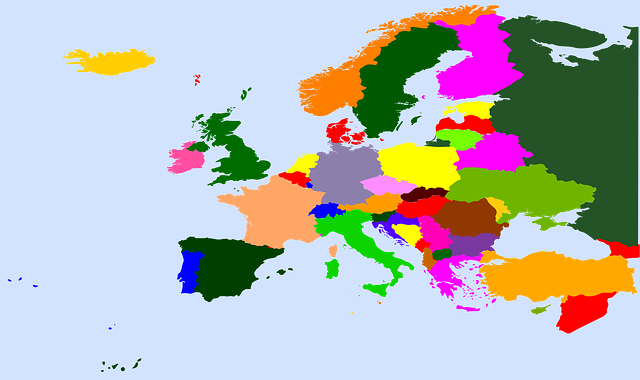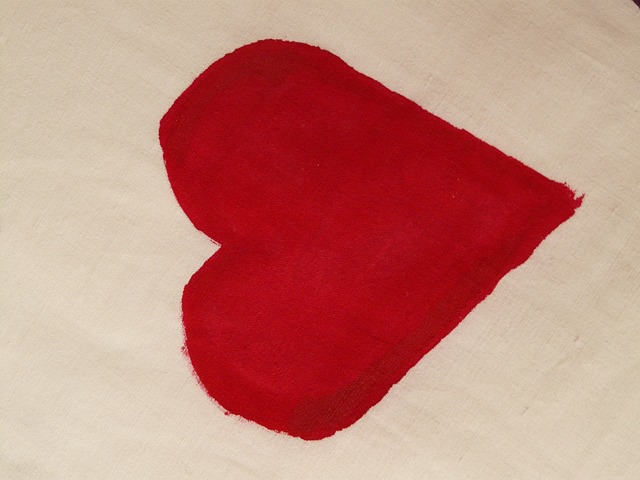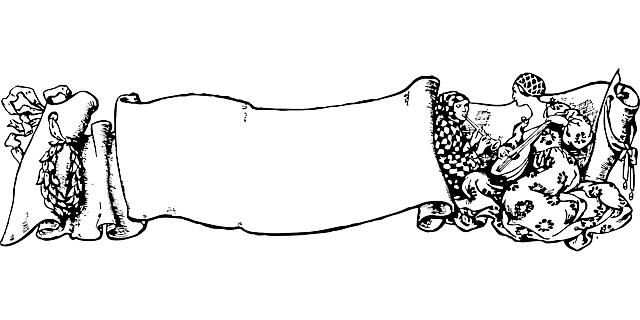الحرب اليابانية الصينية الأولى
| الحرب اليابانية الصينية الأولى | |||||||||
|---|---|---|---|---|---|---|---|---|---|
|
القوات اليابانية أثناء الحرب الصينية اليابانية الأولى الحرب اليابانية الصينية الأولى, المعارك الرئيسية وتحركات الحشود | |||||||||
| |||||||||
| الخصوم | |||||||||
|
|
|
||||||||
| القادة والزعماء | |||||||||
|
|
||||||||
| الحرب الصينية اليابانية الأولى | ||||||
|---|---|---|---|---|---|---|
|
| ||||||
| حرب تشينگ-اليابان | ||||||
| ||||||
| حرب اليابان-تشينگ | ||||||
| ||||||
| حرب جياوو – في إشارة إلى سنة 1894 حسب النظام الستيني التقليدي | ||||||
|
الحرب اليابانية الصينية الأولى (1 أغسطس 1894–17 أبريل 1895) كانت حرباً بين صين تشينگ ويابان مـِيـْجي على السيطرة على كوريا. وبعد أكثر من ستة أشهر من الفوزات المتتالية للقوات البرية والبحرية اليابانية وفقدان ميناء وِيْهايوِيْ، طلبت حكومة تشينگ السلام في فبراير 1895.
الحرب اليابانية الصينية أمست رمزاً لانحطاط ومهانة أسرة تشينگ وبيـّنت نجاح جهود العصرنة في اليابان منذ عهد استعادة ميـْجي بالمقارنة وفشل جهود عصرنة الجيش بالصين في صد التهديدات لسيادة الدولة. أبرز النتائج الرئيسية كانت انتنطق السيادة الإقليمية في آسيا، لأول مرة، من الصين إلى اليابان. الفقدان المهين لكوريا كدولة مؤدية للجزية أشعل استهجاناً شعبيناً غير مسبوق. وقد كانت الحرب الضربة القاضية لأسرة تشينگ والتنطقيد الكلاسيكية الصينية، مما أشعل اضطرابات بقيادة صن يات-سن وكانگ يووِيْ، والتي بلغت ذروتها في ثورة شينهاي سنة 1911.
يشيع فهم تلك الحرب في الصين بإسم حرب جياوو (الصينية المبسطة: 甲午戰爭; پنين: Jiǎwǔ Zhànzhēng)، في إشارة إلى السنة (1894) حسب تسميتها في traditional النظام الستيني التقليدي للسنين. وفي اليابان، تُسمى حرب اليابان-تشينگ (Japanese: 日清戦争 Hepburn: Nisshin sensō). وفي كوريا، حيث دار معظم الحرب، تُسمى حرب تشينگ-اليابان (بالكورية: 청일전쟁؛ هانجا: 淸日戰爭).
الخلفية والأسباب
بعد قرنين, سياسة العزلة, أوساكـُكو, under the shoguns of the Edo period came to an end when the country was forced open to trade by التدخل الأمريكي في 1854. The years following the Meiji Restoration of 1868 and the fall of the Shogunate had seen Japan transform itself from a feudal and comparatively backward society to a modern industrial state. The Japanese had sent delegations and students around the world in order to learn and assimilate western arts and sciences; this was done to prevent Japan falling under foreign domination and also enable Japan to compete equally with the Western powers.
النزاع على كوريا
كقوة صاعدة حديثاً, اليابان turned its attention towards Korea. In order to protect its own interests and security, Japan wanted to either annex Korea before it fell prey to (or was annexed by) another power, or at least ensure Korea's effective independence by opening its resources and reforming its administration. As a Prussian advisor to the Meiji army put it, Korea was "a dagger pointed at the heart of Japan". Japan felt that another power having a military presence on the Korean peninsula would have been detrimental to Japanese national security, and so Japan resolved to end the centuries-old Chinese suzerainty over Korea. Moreover, Japan realized that Korea’s coal and iron ore deposits would benefit Japan's increasingly-expanding industrial base.
Korea had traditionally been a tributary state and continued to be so under the influence of China's أسرة تشينگ, which exerted large influence over the conservative Korean officials gathered around the royal family of the Joseon Dynasty. Opinion in Korea itself was split; conservatives wanted to retain the traditional subservient relationship with China, while reformists wanted to establish closer ties with Japan and western nations. After two Opium Wars and the Sino-French War, China had become weak and was unable to resist western intervention and encroachment (see Unequal Treaties). Japan saw this as an opportunity to replace Chinese influence in Korea with its own.
On February 27, 1876, after certain incidents and confrontations involving Korean isolationists and the Japanese, Japan imposed the Treaty of Ganghwa on Korea, forcing Korea to open itself to Japanese and foreign trade and to proclaim its independence from China in its foreign relations.
In 1884 a group of pro-Japanese reformers briefly overthrew the pro-Chinese conservative Korean government in a bloody coup d'état. However, the pro-Chinese faction, with assistance from Chinese troops under General Yuan Shikai, succeeded in regaining control with an equally bloody counter-coup which resulted not only in the deaths of a number of the reformers, but also in the burning of the Japanese legation and the deaths of several legation guards and citizens in the process. This caused an incident between Japan and China, but was eventually settled by the Sino-Japanese Convention of Tientsin of 1885 in which the two sides agreed to (a) pull their expeditionary forces out of Korea simultaneously; (b) not send military instructors for the training of the Korean military; and (c) notify the other side beforehand should one decide to send troops to Korea. The Japanese, however, were frustrated by repeated Chinese attempts to undermine their influence in Korea.
حالة الخصوم
اليابان
Japan's reforms under the Meiji emperor gave significant priority to naval construction and the creation of an effective modern national army and navy. Japan sent numerous military officials abroad for training, and evaluation of the relative strengths and tactics of European armies and navies.
الأسطول الياباني الامبراطوري
| البتر الحربية الرئيسية |
|---|
| طرادات محمية Protected Cruisers |
| (سفينة القائد) |
| طرادات Cruisers |
| حراقات مدرعة Armored Corvettes |
| سفينة حربية مصفحة Ironclad Warship |
البحرية اليابانية الامبراطورية صـُممت على نسق البحرية الملكية البريطاني , التي كانت وقتها أقوى قوة بحرية في العالم. المستشارون البريطانيون تم ارسالهم إلى اليابان للتدريب, advise and educate the naval establishment, while students were in turn sent to Great Britain in order to study and observe the Royal Navy. Through drilling and tuition by Royal Navy instructors, Japan was able to possess a navy expertly skilled in the arts of gunnery and seamanship.
عند بداية الأعمال العدائية، البحرية اليابانية الامبراطورية ضم أسطولاً (بالرغم من افتقاده battleships) من 12 modern warships ( being added during the war), one frigate (), 22 قارب طوربيدو, والكثير من auxiliary/armed merchant cruisers and converted liners.
لم يكن لدى اليابان حتى ذلك الوقت الإمكانيات لشراء سفن بحرية ولذلك خططت لاعتناق أفكار "جون إكول Jeune Ecole" ("المدرسة الفتية") التي تفضل السفن الحربية الصغيرة السريعة, خاصة الطرادات cruisers وقوارب الطوربيد, ضد الوحدات الأكبر.
Many of Japan’s major warships were built in British and French shipyards (eight British, three French, and two Japanese-built) and 16 of the torpedo boats were known to have been built in France and assembled in Japan.
الجيش الياباني الامبراطوري
The Meiji era government at first modeled the army on the French Army—French advisers had been sent to Japan with the two military missions (in 1872-1880 and 1884; these were the second and third missions respectively, the first had been under the shogunate). Nationwide conscription was enforced in 1873 and a western-style conscript army was established; military schools and arsenals were also built.
In 1886 Japan turned towards the German Army, specifically the Prussian model as the basis for its army. Its doctrines, military system and organisation were studied in detail and adopted by the IJA. In 1885, Jakob Meckel, a German adviser implemented new measures such the reorganization of the command structure of the army into divisions and regiments; the strengthening of army logistics, transportation, and structures (thereby increasing mobility); and the establishment of artillery and engineering regiments as independent commands.
By the 1890s, Japan had at its disposal a modern, professionally trained western-style army which was relatively well equipped and supplied. Its officers had studied abroad and were well educated in the latest tactics and strategy.
By the start of the war, the الجيش الياباني الامبراطوري could field a total force of 120,000 men in two armies and five divisions.
| الجيش الياباني الامبراطوري Composition 1894-1895 |
| الجيش الياباني الأول |
|---|
| 3rd Provincial Division (Nagoya) |
| 5th Provincial Division (Hiroshima) |
| 2nd Japanese Army |
| 1st Provincial Division (Tokyo) |
| 2nd Provincial Division (Sendai) |
| 6th Provincial Division (Kumamoto) |
| In Reserve |
| 4th Provincial Division (Osaka) |
| Invasion of Formosa (Taiwan) |
| Imperial Guards Division |
الصين
بالرغم من حتى قوة بـِيْ يانگ -- جيش بـِيْ يانگ وأسطول بـِيْ يانگ -- كانت الأفضل تجهيزاً ومثلت العسكرية الصينية العصرية الحديثة, إلا حتى الفساد كان معضلة خطيرة. Chinese politicians systematically embezzled funds, even during the war. As a result, the أسطول بـِيْ يانگdidn't purchase any battleships after its establishment in 1888. And the purchase of ammunition stopped in 1891, the funding was embezzled to build the summer palace in Beijing. Logistics were a huge problem, as construction of railroads in Manchuria had been discouraged. The morale of the Chinese armies was generally very low due to lack of pay and prestige, استعمال الأفيون, and poor leadership which contributed to some rather ignominious withdrawals such as the abandonment of the very well fortified and defensible Weihaiwei.
جيش بـِيْ يانگ
صين أسرة تشينگ لم يكن لديها جيش وطني, إلا أنها من بعد Taiping Rebellion, كان لديها الكثير من الجيوش الطائفية المنفصلة من مانشو, المنغول, الهوي (مسلم) وصينيي الهان, which were further divided into largely independent regional commands. أثناء الحرب, most of the fighting was done by the جيش بـِيْ يانگ وأسطول بـِيْ يانگwhile pleas calling for help to other Chinese armies and navies were completely ignored بسبب المنافسات الإقليمية. The Huai and Anhwei armies made up the larger Beiyang Army.
أسطول بـِيْ يانگ
The أسطول بـِيْ يانگwas one of the four modernised Chinese navies in the late أسرة تشينگ. The navies were heavily sponsored by Li Hongzhang, who was the Viceroy of Zhili. The أسطول بـِيْ يانگwas the dominant navy in شرق آسيا قبل الحرب اليابانية الصينية الأولى. أسطول بـِيْ يانگwas said to be the "Best in Asia" and "The 8th best in the world" during the late 1880s.
| أسطول بـِيْ يانگ | البتر البحرية الرئيسية |
|---|---|
| Ironclad Battleships | Dingyuan (flagship), Zhenyuan |
| Armoured Cruisers | King Yuen, Lai Yuen |
| Protected Cruisers | Chih Yuen, Ching Yuen |
| Cruisers | Torpedo Cruisers - Tsi Yuen, Kuang Ping/Kwang Ping | Chaoyong, Yangwei |
| Coastal warship | Pingyuan |
| Corvette | Kwan Chia |
13 أوقرب ذلك من قوارب الطوربيدو, numerous gunboats and chartered merchant vessels
المراحل المبكرة للحرب
In 1893 a pro-Japanese Korean revolutionary, Kim Ok-kyun, was assassinated in Shanghai, allegedly by agents of Yuan Shikai. His body was then put aboard a Chinese warship and sent back to Korea, where it was supposedly quartered and displayed as a warning to other rebels. The Japanese government took this as a direct affront. The situation became increasingly tense later in the year when the Chinese government, at the request of the Korean Emperor, sent troops to aid in suppressing the Tonghak Rebellion. The Chinese government informed the Japanese government of its decision to send troops to the Korean peninsula in accordance with the Convention of Tientsin, and sent General Yuan Shikai as its plenipotentiary at the head of 2,800 troops. The Japanese countered that they consider this action to be a violation of the Convention, and sent their own expeditionary force (the Oshima Composite Brigade) of 8,000 troops to Korea. The Japanese force subsequently seized the emperor, occupied the Royal Palace in Seoul byثمانية June 1894, and replaced the existing government with the members from the pro-Japanese faction. Though Chinese troops were already leaving Korea, finding themselves unwanted there, the new pro-Japanese Korean government granted Japan the right to expel the Chinese troops forcefully, while Japan shipped more troops to Korea. The legitimacy of the new government was rejected by China, and the stage was thus set for conflict.
نشأة الحرب
1 June 1894 : The Tonghak Rebel Army moves towards Seoul. The Korean government requests help from the Chinese government to suppress the rebellion.
6 June 1894: The Chinese government informs the Japanese government under the obligation of Convention of Tientsin of its military operation. About 2,465 Chinese soldiers were transported to Korea within days.
8 June 1894: First of around 4,000 Japanese soldiers and 500 marines land at Jemulpo (Incheon) despite Korean and Chinese protests.
11 June 1894: End of Tonghak Rebellion.
13 June 1894: The Japanese government telegraphs the Commander of the Japanese forces in Korea, Otori Keisuke, to remain in Korea for as long as possible despite the end of the rebellion.
16 June 1894: Japanese Foreign Minister Mutsu Munemitsu meets with Wang Fengzao, Chinese ambassador to Japan, to discuss the future status of Korea. Wang states that Chinese government intends to pull out of Korea after the rebellion has been suppressed and expects Japan to do the same. However, China also appoints a resident to look after Chinese interests in Korea and to re-assert Korea’s traditional subservient status to China.
22 June 1894: Additional Japanese troops arrive in Korea.
3 July 1894: Otori proposes reforms of the Korean political system, which is rejected by the conservative and pro-Chinese Korean government.
7 July 1894: Mediation between China and Japan arranged by the British ambassador to China fails.
19 July 1894: Establishment of Japanese Joint Fleet, consisting of almost all vessels in the الأسطول الياباني الامبراطوري, in preparation for upcoming war.
23 July 1894: Japanese troops enter Seoul, seize the Korean Emperor and establish a new pro-Japanese government, which terminates all Sino-Korean treaties and grants the الجيش الياباني الامبراطوري the right to expel the Chinese Beiyang Army troops from Korea.
الأحداث خلال الحرب
التحركات الافتتاحية
By July 1894, Chinese forces in Korea numbered 3000-3500 and could only be supplied by sea through the Bay of Asan. The Japanese objective was firstly to blockade the Chinese at Asan and then encircle them with their land forces.
إغراق Kow-shing
On 25 July 1894, the cruisers , and of the Japanese flying squadron, which had been patrolling off Asan, encountered the Chinese cruiser Tsi-yuan and gunboat Kwang-yi . These vessels had steamed out of Asan in order to meet another Chinese gunboat, the Tsao-kiang, which was convoying a transport toward Asan. After a brief, one hour engagement, the cruiser Tsi-yuan escaped while the Kwang-yi became stranded on rocks, where its powder-magazine exploded.
The Kow-shing was a 2,134-ton British merchant vessel owned by the Indochina Steam Navigation Company of London, commanded by Captain T. R. Galsworthy and crewed by 64 men. The ship was chartered by the Qing government to ferry troops to Korea, the Kow-shing and the gunboat Tsao-kiang were on their way to Asan to reinforce Chinese forces there - 1200 troops plus supplies and equipment were onboard the vessel. A German artillery officer, Major von Hanneken, acting as an advisor to the Chinese was also onboard, the ship was due to arrive on 25 July.
The cruiser (under the command of Captain Togo Heihachiro) intercepted the two ships. The gunboat was eventually captured, the Japanese then ordered the Kow-shing to follow the Naniwa and requested that the Europeans onboard be transferred to the Naniwa. However the 1200 Chinese on board desired to return to Taku, and threatened to kill the English captain, Galsworthy and his crew. After four hours of negotiations, Captain Togo gave the order to fire upon the vessel. The Europeans jumped overboard only to be fired upon by the Chinese, the Japanese managed to rescue many of the crew. The sinking of the Kow-shing almost caused a diplomatic incident between Japan and Great Britain, but the action was ruled in conformity with International Law regarding the treatment of mutineers.
النزاع في كوريا
Commissioned by the new pro-Japanese Korean government to expel the Chinese forces from Korean territory by force, Major-General اوشيما يوشيماسا led mixed Japanese brigades numbering about 4,000 on a rapid forced march from Seoul south toward Asan Bay to face 3,500 Chinese troops garrisoned at Seonghwan Station east of Asan and Kongju.
في 28 يوليو1894, التقى الجمعان خارج أسان in an engagement that lasted till 0730 hours the next morning, 29 July. The Chinese gradually lost ground to the superior Japanese numbers, and finally broke and fled towards Pyongyang. Chinese casualties amounted to 500 killed and wounded, compared to 82 Japanese casualties.
الحرب بين اليابان والصين اُعلنت رسمياً في 1 أغسطس 1894.
القوات الصينية المتبقية في كوريا, بحلول أربعة أغسطس, انسحبت إلى مدينة Pyongyang الشمالية, حيث انضموا لاحقاً للقوات المرسلة من الصين. The 13,000-15,000 defenders made extensive repairs and preparations to the city, hoping to check the Japanese advance.
الجيش الياباني الامبراطوري اقترب من Pyongyang من عدة محاور في 15 سبتمبر 1894. هاجم اليابانيون المدينة and eventually defeated the Chinese by an attack from the rear, the defenders surrendered. However, taking advantage of heavy rainfall and using the cover of darkness, the remaining troops marched out of Pyongyang and headed northeast towards the coast and the city of Uiju. Casualties were 2000 killed and around 4000 wounded for the Chinese while the Japanese lost 102 men killed, 433 wounded and 33 missing. The whole Japanese army entered the city of Pyongyang on the early morning of 16 سبتمبر 1894.
هزيمة أسطول بـِيْ يانگ
The الأسطول الياباني الامبراطوري destroyedثمانية out ofعشرة warships of the Chinese Beiyang Fleet off the mouth of the Yalu River on 17 September 1894. Japan's command of the sea was assured. The Chinese however were able to land 4,500 troops near the Yalu River.
غزومنشوريا
With the defeat at Pyongyang, the Chinese abandoned northern Korea and instead took up defensive positions in fortifications along their side of the Yalu River near Jiuliangcheng. After receiving reinforcements, the Japaneseعشرة October then quickly pushed north towards Manchuria. On the night of 24 October 1894, the Japanese successfully crossed the Yalu undetected, by erecting a pontoon bridge. The following afternoon of 25 October at 5.00pm, they assaulted the outpost of Hushan east of Jiuliangcheng. At 10.30pm the defenders deserted their positions and by the next day they were in full retreat from Jiuliangcheng. With the capture of Jiuliangcheng, General Yamagata's 1st Army Corps preceded to occupy the nearby city of Dandong while to the north, elements of the retreating Beiyang Army set fire to the city of Fengcheng. The Japanese had established a firm foothold on Chinese territory with the loss of only أربعة killed and 140 wounded.
The Japanese 1st Army Corps would then split into two groups with General Nozu Michitsura's 5th Provincial Division advancing towards the city of Mukden and Lieutenant General Katsura Taro's 3rd Provincial Division, west along towards the Liaodong Peninsula pursuing fleeing Chinese forces. By December the 3rd Provincial Division would capture the towns of Ta-tung-kau, Ta-ku-shan, Xiuyan, Tomu-cheng, Hai-cheng, and Kang-wa-seh. The 5th Provincial Division would march against a severe Manchurian winter heading towards Mukden.
The Japanese 2nd Army Corps under Oyama Iwao landed on the south coast of Liaodong Peninsula on 24 October and quicky moved to capture Kin-chow and Talienwan on 6-7 November. The Japanese laid siege to the strategic port of Lushunkou.
سقوط لوشونكو
By 21 November 1894, the Japanese had taken the city of Lüshunkou (Port Arthur). The Japanese army allegedly massacred thousands of the city's civilian Chinese inhabitants, in an event that came to be called the Port Arthur Massacre. Byعشرة December 1894, Kaipeng (modern Gaixian, Liaoning Province, China) fell to the Japanese 1st Army Corps.
سقوط ويْ هاي ويْ وما تلاه
The Chinese fleet subsequently retreated behind the Weihaiwei fortifications. However, they were then surprised by Japanese ground forces, who outflanked the harbor's defenses. Battle of Weihaiwei would be a 23 day siege with the major land and naval components taking place between 20 January and 12 February 1895.
After Weihaiwei's fall on 12 February 1895 and an easing of harsh winter conditions, Japanese troops pressed further into southern Manchuria and northern China. By March 1895 the Japanese had fortified posts that commanded the sea approaches to Beijing. This would be the last major battle to be fought, however numerous skirmishes would occur. The Battle of Yinkou fought outside the port town of Yingkou, Manchuria Onخمسة March 1895.
غزوفورموزا (تايوان) والبسكادورس
في 26 مارس 1895 غزت القوات اليابانية جزر الپسكادورس اللقاءة لتايوان واحتلتها بدون خسائر. وفي 29 مارس 1895 هبطت القوات اليابانية بقيادة الأميرال موتونوري كاباياما في شمال تايوان وبدأ في احتلالها.
نهاية الحرب
The Treaty of Shimonoseki was signed on 17 April 1895. China recognised the total independence of Korea, ceded the Liaodong Peninsula (In present-day south of Liaoning Province), Taiwan/Formosa and the Pescadores Islands to Japan "in perpetuity". Additionally, China was to pay Japan 200 million Kuping taels as reparation. China also signed a commercial treaty permitting Japanese ships to operate on the Yangtze River, to operate manufacturing factories in treaty ports and to open four more ports to foreign trade. The Triple Intervention however forced Japan to give up the Liaodong Peninsula in exchange for another 30 million Kuping taels (450 million yen).
تعويضات الحرب
After the war, according to the Chinese scholar, Jin Xide, the Qing government paid a total of 340,000,000 taels silver to Japan for both the reparations of war and war trophies, equivalent to (then) 510,000,000 Japanese yen, about 6.4 times the Japanese government revenue. Similarly, the Japanese scholar, Ryoko Iechika, calculated that the Qing government paid total $21,000,000 (about one third of revenue of the Qing government) in war reparations to Japan, or about 320,000,000 Japanese yen, equivalent to (then) two and half years of Japanese government revenue.[بحاجة لمصدر]
تداعيات الحرب
The Japanese success during the war was the result of the modernisation and industrialisation embarked on two decades earlier. The war demonstrated the superiority of Japanese tactics and training as a result of the adoption of a western style military. The الجيش الياباني الامبراطوري and Navy were able to inflict a string of defeats on the Chinese through foresight, endurance, strategy and power of organization. Japanese prestige rose in the eyes of the world. The victory established Japan as a regional power (if not a great power) on equal terms with the west and as the dominant power in Asia.
The war for China revealed the ineffectiveness of its government, its policies, the corruption of the administration system and the decaying state of the أسرة تشينگ (something that had been recognized for decades). Anti-foreign sentiment and agitation grew and would later accumulate in the form of the Boxer Rebellion five years later. Throughout the 19th century the أسرة تشينگ was unable to prevent foreign encroachment—this together with calls for reform and the Boxer Rebellion would be the key factors that would lead to 1911 revolution and the downfall of the أسرة تشينگ in 1912.
بالرغم من حتى اليابان حققت ما رنت إليه, وهوإنهاء النفوذ الصيني على كوريا, إلا أنها اُجبرت بتردد على التخلي عن شبه جزيرة لياودونج (Port Arthur) لقاء زيادة التعويضات التي تدفعها الصين. القوى الاوروبية (روسيا على الأخص) while having no objection to the other clauses of the treaty, did feel that Japan should not gain Port Arthur, for they had their own ambitions in that part of the world. Russia persuaded Germany and France to join her in applying diplomatic pressure on the Japanese, resulting in the Triple Intervention of 23 April 1895.
In 1898 Russia signed a 25-year lease on Liaodong Peninsula and preceded to set up a naval station at Port Arthur. Although this infuriated the Japanese, they were more concerned with Russian encroachment towards Korea than in Manchuria. Other powers, such as France, Germany, and Great Britain, took advantage of the situation in China and gained port and trade concessions at the expense of the decaying Qing Empire. Tsingtao and Kiaochow was acquired by Germany, Kwang-Chou-Wan by France, and Weihaiwei by Great Britain.
Tensions between Russia and Japan would increase in the years after the First Sino-Japanese war. During the Boxer Rebellion an eight member international force was sent to suppress and quell the uprising; Russia sent troops into Manchuria as part of this force. After the suppression of the Boxers the Russian Government agreed to vacate the area. However by 1903 it had actually increased the number of its forces in Manchuria. Negotiations between the two nations (1901–1904) to establish mutual recognition of respective spheres of influence (Russia over Manchuria and Japan over Korea) were repeatedly and intentionally stalled by the Russians. They felt that they were strong and confident enough not to accept any compromise and believed Japan would not dare go to war against a European power. Russia also had intentions to use Manchuria as a springboard for further expansion of its interests in the Far East.
In 1902, Japan formed an alliance with Britain the terms of which stated that if Japan went to war in the Far East, and that a third power entered the fight against Japan, then Britain would come to the aid of the Japanese. This was a check to prevent either Germany or France from intervening militarily in any future war with Russia. British reasons for joining the alliance were also to check the spread of Russian expansion into the Pacific, thereby threatening British interests.
Increasing tensions between Japan and Russia as a result of Russia's unwillingness to enter into a compromise and the prospect of Korea falling under Russia's domination, therefore coming into conflict with and undermining Japan's interests, compelled Japan to take action. This would be the deciding factor and catalyst that would lead to the الحرب اليابانية الروسية of 1904–05.
انظر أيضاً
- جيش بـِيْيانگ Beiyang Army
- أسطول بـِيْيانگ Beiyang Fleet
- تاريخ الصين
- تاريخ اليابان
- تاريخ كوريا
- الأسطول الياباني الامبراطوري
- الجيش الياباني الامبراطوري
- بوابة الإستقلال
- الغزوالياباني لتايوان (1895)
- التاريخ العسكري للصين
- التاريخ العسكري لليابان
- الجيش الجديد New Army
- مذبحة پورت آرثر (1894)
- الحرب الروسية اليابانية
- الحرب الصينية اليابانية الثانية
- العلاقات الصينية اليابانية
المصادر
- Chamberlin, William Henry. Japan Over Asia, 1937, Little, Brown, and Company, Boston, 395 pp.
- Colliers (Ed.), The Russo-Japanese War, 1904, P.F. Collier & Son, New York, 129 pp.
- Kodansha Japan An Illustrated Encyclopedia, 1993, Kodansha Press, Tokyo ISBN 4-06-205938-X
- Lone, Stewart. Japan's First Modern War: Army and Society in the Conflict with China, 1894-1895, 1994, St. Martin's Press, New York, 222 pp.
- Paine, S.C.M. The Sino-Japanese War of 1894-1895: Perception, Power, and Primacy, 2003, Cambridge University Press, Cambridge, MA, 412 pp.
- Sedwick, F.R. (R.F.A.). The Russo-Japanese War, 1909, The Macmillan Company, NY, 192 pp.
- Theiss, Frank. The Voyage of Forgotten Men, 1937, Bobbs-Merrill Company, 1st Ed., Indianapolis & New York, 415 pp.
- Warner, Dennis and Peggy. The Tide At Sunrise, 1974, Charterhouse, New York, 659 pp.
- Urdang, Laurence/Flexner, Stuart, Berg. "The Random House Dictionary of the English Language, College Edition. Random House, New York, (1969).
- Military Heritage did an editorial on the Sino-Japanese War of 1894 (Brooke C. Stoddard, Military Heritage, December 2001, Volume 3, No. 3, p.6).
هامش
- ^ "The skills of the Japanese officers and men was [sic] astronomically higher those of their Chinese counterparts." [1]
- ^ "A new balance of power had emerged. China's millennia-long regional dominance had abruptly ended. Japan had become the dominant power of Asia, a position it would retain throughout the twentieth century". Paine, The Sino-Japanese War of 1894-1895: Perception, Power, and Primacy.
وصلات خارجية
| مشاع الفهم فيه ميديا متعلقة بموضوع First Sino-Japanese War. |
- 程映虹︰從"版畫事件"到《中國向西行進》Peter Perdue 濮德培和中國當代民族主義 (صينية)
- Detailed account of the naval Battle of the Yalu River by Philo Norton McGiffen
- , available at Project Gutenberg.
- Print exhibition at MIT
- – Captain Galsworthy's Report
- SinoJapaneseWar.com A detailed account of the Sino-Japanese War



